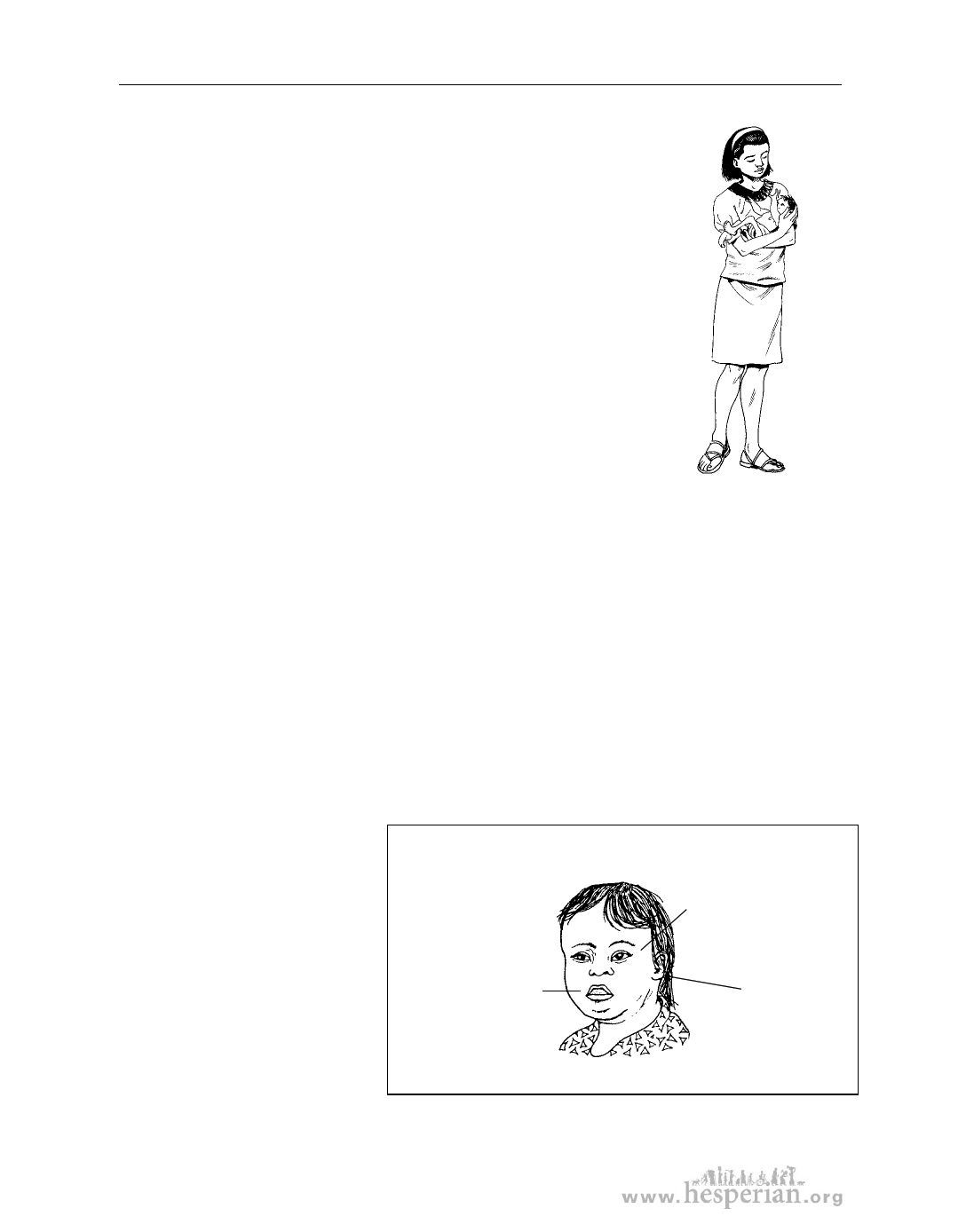
14 chapter 1: Disability and the community
Accidents
Many women and children get disabling injuries at home by
burns from cooking fires, falls, road accidents, and breathing
or drinking toxic chemicals. Workplace accidents, especially in
less regulated sectors such as construction, agriculture, mining,
and smaller businesses, are a common source of disability.
Poisons and pesticides
Poisons such as lead found in paints, pesticides such as
rat poison, and other chemicals can cause disabilities in
people and cause birth defects in babies growing in the
womb. Smoking or chewing tobacco, breathing smoke,
and drinking alcohol during pregnancy can also harm a
child before she is born.
Workers often use chemicals on the job or in the fields
without being taught how to use them safely, or without
even knowing if they are dangerous. Accidents in factories
can release poisons into the air, water, or ground, causing
terrible health problems, including permanent disabilities.
This woman was a
farm worker and was
exposed to dangerous
chemicals when she was
pregnant. This affected
her baby while he was in
the womb, and he was
born with a disability.
Inherited disabilities
Some disabilities are known to be inherited, such as spinal muscular atrophy and
muscular dystrophy (diseases of the muscles and nerves). Women who already
have one or more children with an inherited disability are more likely to give
birth to another child with the same problem. Other disabilities can result when
close blood relatives (such as brothers and sisters, first cousins, or parents and
children) have children
together. Children born to
mothers 40 years of age or
older are more likely to have
Down syndrome. However,
most disabilities are not
Physical
characteristics of
Down syndrome
eyes that slant
upward; sometimes
cross-eyed or poor
sight
inherited. In most cases,
the parents of a baby born
with a disability did nothing
to cause the disability. They
small mouth,
hangs open; roof
of mouth is high
and narrow;
tongue hangs out
ears low
should never be blamed.
A Health Handbook for Women with Disabilities 2007